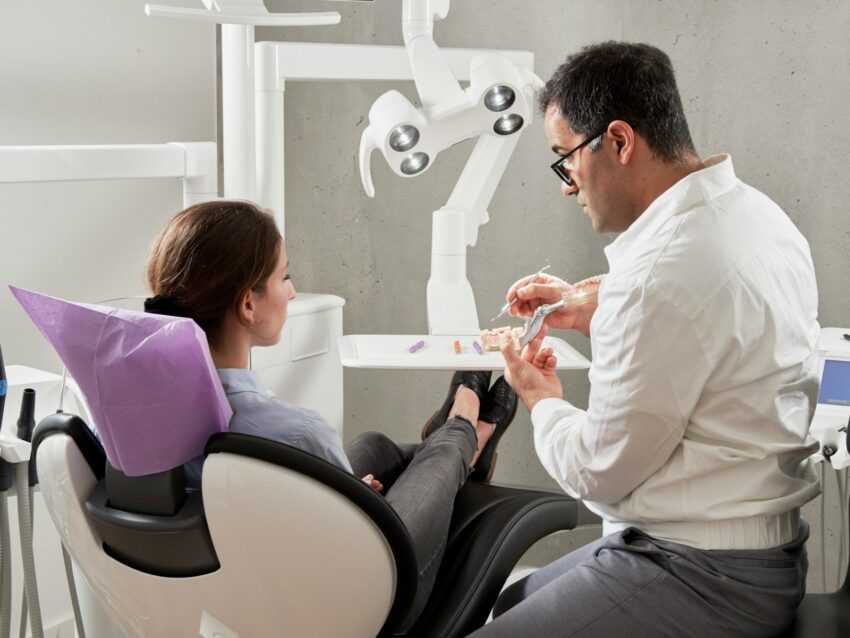Dental implants have revolutionized modern dentistry, offering a permanent solution for missing teeth that closely mimics natural tooth structure and function. These sophisticated medical devices represent one of the most significant advances in oral healthcare, providing patients with restored confidence and improved quality of life. Understanding how dental implants work and their benefits can help individuals make informed decisions about their oral health treatment options.

Understanding the Anatomy of Dental Implants
A dental implant consists of three primary components that work together to replace a missing tooth. The implant itself is a titanium post that serves as an artificial tooth root, surgically placed into the jawbone. This biocompatible metal is chosen specifically because it has the unique ability to fuse with bone tissue through a process called osseointegration. The second component is the abutment, a connector piece that attaches to the top of the implant and extends above the gum line. Finally, the crown is the visible, tooth-colored restoration that sits atop the abutment, designed to match the appearance and function of natural teeth.
The materials used in dental implants are carefully selected for their durability and compatibility with human tissue. Titanium and titanium alloys are the most commonly used materials for the implant post due to their excellent biocompatibility and strength. The crown portion is typically made from porcelain, ceramic, or zirconia, materials chosen for their aesthetic properties and ability to withstand the forces of chewing and biting.
The Implant Process: From Consultation to Completion
The dental implant process typically unfolds in several carefully planned stages over several months. Initially, a comprehensive evaluation is conducted, including detailed X-rays and sometimes 3D imaging to assess bone density and structure. According to Dr. Mark Bilello, A Houma, LA dentist, proper planning and evaluation are crucial factors in achieving successful implant outcomes, as they help determine the optimal placement strategy for each individual patient.
During the surgical phase, the implant is precisely placed into the jawbone under local anesthesia or sedation. The surgery itself is typically completed in one to two hours per implant, depending on the complexity of the case. Following placement, a healing period of three to six months is required for osseointegration to occur. During this time, the bone grows around and bonds with the titanium implant, creating a stable foundation for the final restoration.
Once osseointegration is complete, the abutment is attached to the implant in a minor surgical procedure. After the gums heal around the abutment, impressions are taken to create the custom crown, which is then permanently attached to complete the restoration.

Success Rates and Long-Term Performance
Dental implants boast impressive success rates that continue to improve with advancing technology and techniques. Current statistics indicate that implants have an overall success rate of 98.6% at five years post-loading, while the 10-year survival rate for dental implants is 90-95%. Even more remarkably, research shows that 4 out of 5 implants will last 20 years or more when properly maintained.
The global failure rate provides additional perspective on implant reliability. The average failure rate of dental implants, 3.1% worldwide and 6% in the U.S., suggests a generally high success rate, though these numbers emphasize the importance of selecting experienced practitioners and following proper aftercare protocols. Long-term studies demonstrate consistently positive outcomes, with cumulative survival rates at the implant level of 98.9% at 3 years, 98.5% at 5 years, 96.8% at 10 years, and 94.0% at 15 years.
Market Growth and Patient Demographics
The dental implant industry continues to experience remarkable growth, reflecting increasing patient awareness and acceptance of this treatment option. In 2023, the global dental implant market was valued at over $4.5 billion and is projected to grow at a compound annual growth rate (CAGR) of 6.2% through 2024. Looking ahead, the market is expected to reach $8.45 billion by 2033, representing a compound annual growth rate (CAGR) of 7.16% from 2025 to 2033.
Demographic trends reveal that dental implants serve patients across various age groups, with particular benefits for older adults. Statistics reveal that 12.9% of dental implants are for patients aged 65-74, emphasizing the critical role of these procedures in enhancing the quality of life for seniors. Projections suggest continued growth in implant utilization, with models indicating that among adults missing teeth, the prevalence of dental implant use could reach as high as 23% by the year 2026.
Benefits Beyond Tooth Replacement
Dental implants offer numerous advantages over traditional tooth replacement options like dentures or bridges. They preserve jawbone structure by providing the stimulation that natural tooth roots once provided, preventing the bone loss that typically occurs after tooth extraction. This preservation maintains facial structure and prevents the sunken appearance that can develop with prolonged tooth loss.
From a functional perspective, implants restore full chewing capacity, allowing patients to enjoy their favorite foods without restriction. Unlike removable dentures, implants remain securely in place, eliminating concerns about slipping or clicking during eating or speaking. They also don’t require alteration of adjacent healthy teeth, as is necessary with traditional bridges.
Final Word
Dental implants represent the gold standard in tooth replacement technology, offering unparalleled durability, functionality, and aesthetics. With success rates exceeding 95% and the ability to last decades with proper care, they provide a long-term solution that closely replicates natural teeth. As technology continues to advance and techniques improve, dental implants will undoubtedly remain at the forefront of restorative dentistry, helping millions of patients worldwide regain their smiles and confidence. For individuals considering tooth replacement options, consulting with a qualified dental professional can help determine if implants are the right choice for their specific needs and circumstances.
